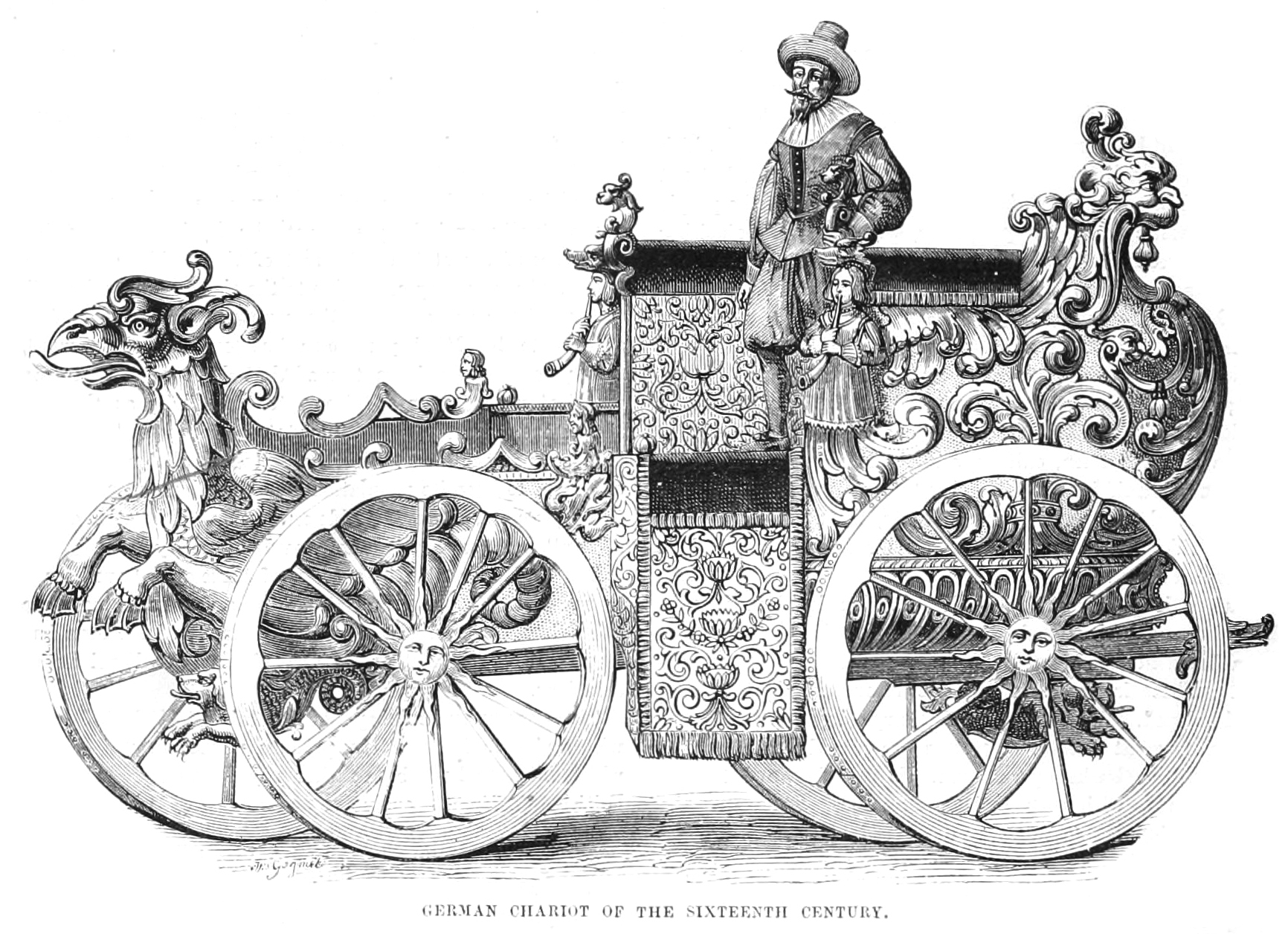 This curious engraving is printed in an 1853 issue of The Illustrated Magazine of Art, along with an equally curious article. You may read the article for yourself, but the gist of it is this:
This curious engraving is printed in an 1853 issue of The Illustrated Magazine of Art, along with an equally curious article. You may read the article for yourself, but the gist of it is this:
A certain John Hanstch of Nuremberg “made chariots which moved by a spring, and went two thousand paces an hour.” The engraving shows Herr Hanstch himself driving the thing. The rest of the short article is mostly filler about how amazed the people of olden times would have been if they could see our steam locomotives of today rocketing across the landscape.
Taking what seems to be the generally accepted estimate of two thousand paces to the mile, the thing moved at a rate of one mile per hour, which is not shockingly fast. In fact, it is about a third of the average person’s walking speed. At least the thing would not be very dangerous to pedestrians. The most decrepit among us could probably have seen it coming in plenty of time to shuffle out of the way.
Now here is the more curious thing: in his admittedly brief and lazy searching, Dr. Boli has not found a single reference to John Hanstch (or Johann Hantzsch, or any of the other variant spellings Dr. Boli could think of) who made clockwork chariots in the 1500s. The only results that come up are this article from this issue of this magazine. The article itself is no help: it gives as the source of its information “several special works upon the history of chariot building, and improvements in locomotion in the fifteenth and following centuries.” That is not very specific, though it sounds scholarly. The engraving leaves us with more questions: if the thing existed, it was so lavishly decorated that it could hardly have been the mechanic’s first attempt. One would not spend so much money—or rather, one’s patron would not spend so much money—on chimeras, seahorse-tailed dogs, and other grotesqueries unless the principle had already been demonstrated satisfactorily.
So Dr. Boli puts the question to the Internet at large, or at least to that elite (which is Internet-speak for “small”) group of readers who visit his Magazine: Is there any other record of this sixteenth-century wind-up chariot? Or is this a rather expensive hoax, in which an engraver put considerable effort into a fanciful conception of what a fifteenth-century clockwork chariot would look like if such a thing had existed?